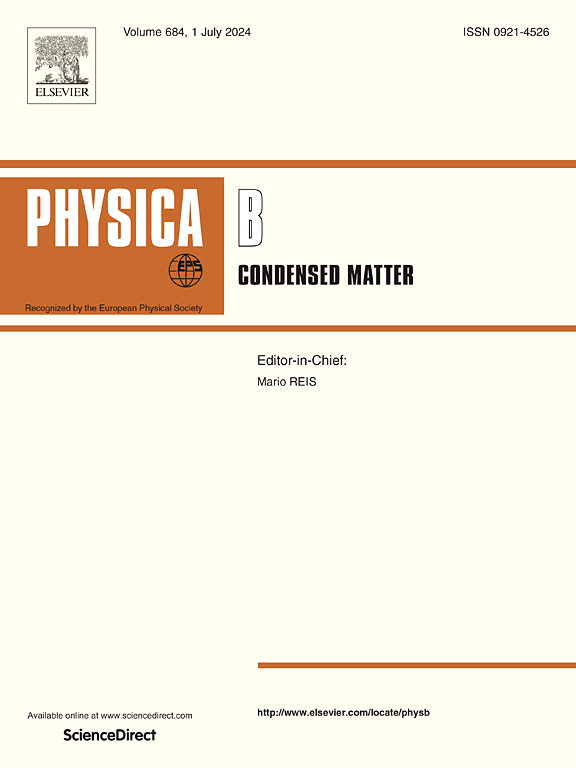静电场在Al12X12 (X = N, P)纳米笼上吸附A-234的第一性原理研究
IF 2.8
3区 物理与天体物理
Q2 PHYSICS, CONDENSED MATTER
引用次数: 0
摘要
利用密度泛函理论(DFT)和时变密度泛函理论(TD-DFT)计算分析了在存在和不存在电场的情况下,有毒A-234在Al12N12和Al12P12纳米笼表面的吸附。研究确定A-234分子的P=O基团吸附在Al12N12和Al12P12纳米笼表面,吸附能分别为- 2.06和- 1.74eV。当外加电场沿+ X和+Y轴施加时,观察到垂直于P=O (+Y)的电场降低了配合物的吸附能。另一方面,平行于P=O键方向(沿+X轴)施加的电场增加了吸附能。相反,沿+Y轴施加电场会降低吸附能,从而提高纳米笼的传感性能。我们的计算结果表明Al12N12和Al12P12纳米笼作为外电场下检测A-234的电位传感器的能力。本文章由计算机程序翻译,如有差异,请以英文原文为准。
First-principles investigation on the role of static electric fields in A-234 adsorption on Al12X12 (X = N, P) nanocages
The adsorption of toxic A-234 over the surface of Al12N12 and Al12P12 nanocages in the presence and absence of an electric field is analyzed utilizing density functional theory (DFT) and time-dependent density functional theory (TD-DFT) calculations. The study determines that the P=O group of A-234 molecule adsorbs on to the surface of Al12N12 and Al12P12 nanocages with adsorption energies of −2.06 and −1.74eV respectively. On application of an external electric field along + X and +Y axis, it was observed that the field perpendicular to P=O (+Y) reduced the adsorption energies of the complex. On the other hand, the electric field applied parallel to the P=O bond direction (along the +X axis) increased the adsorption energies. In contrast, applying the field along the +Y axis decreased the adsorption energy, which can enhance the sensing properties of the nanocage. Our computational outcome presents the proficiency of Al12N12 and Al12P12 nanocages as potential sensor for the detection of A-234 under external electric field.
求助全文
通过发布文献求助,成功后即可免费获取论文全文。
去求助
来源期刊

Physica B-condensed Matter
物理-物理:凝聚态物理
CiteScore
4.90
自引率
7.10%
发文量
703
审稿时长
44 days
期刊介绍:
Physica B: Condensed Matter comprises all condensed matter and material physics that involve theoretical, computational and experimental work.
Papers should contain further developments and a proper discussion on the physics of experimental or theoretical results in one of the following areas:
-Magnetism
-Materials physics
-Nanostructures and nanomaterials
-Optics and optical materials
-Quantum materials
-Semiconductors
-Strongly correlated systems
-Superconductivity
-Surfaces and interfaces
 求助内容:
求助内容: 应助结果提醒方式:
应助结果提醒方式:


